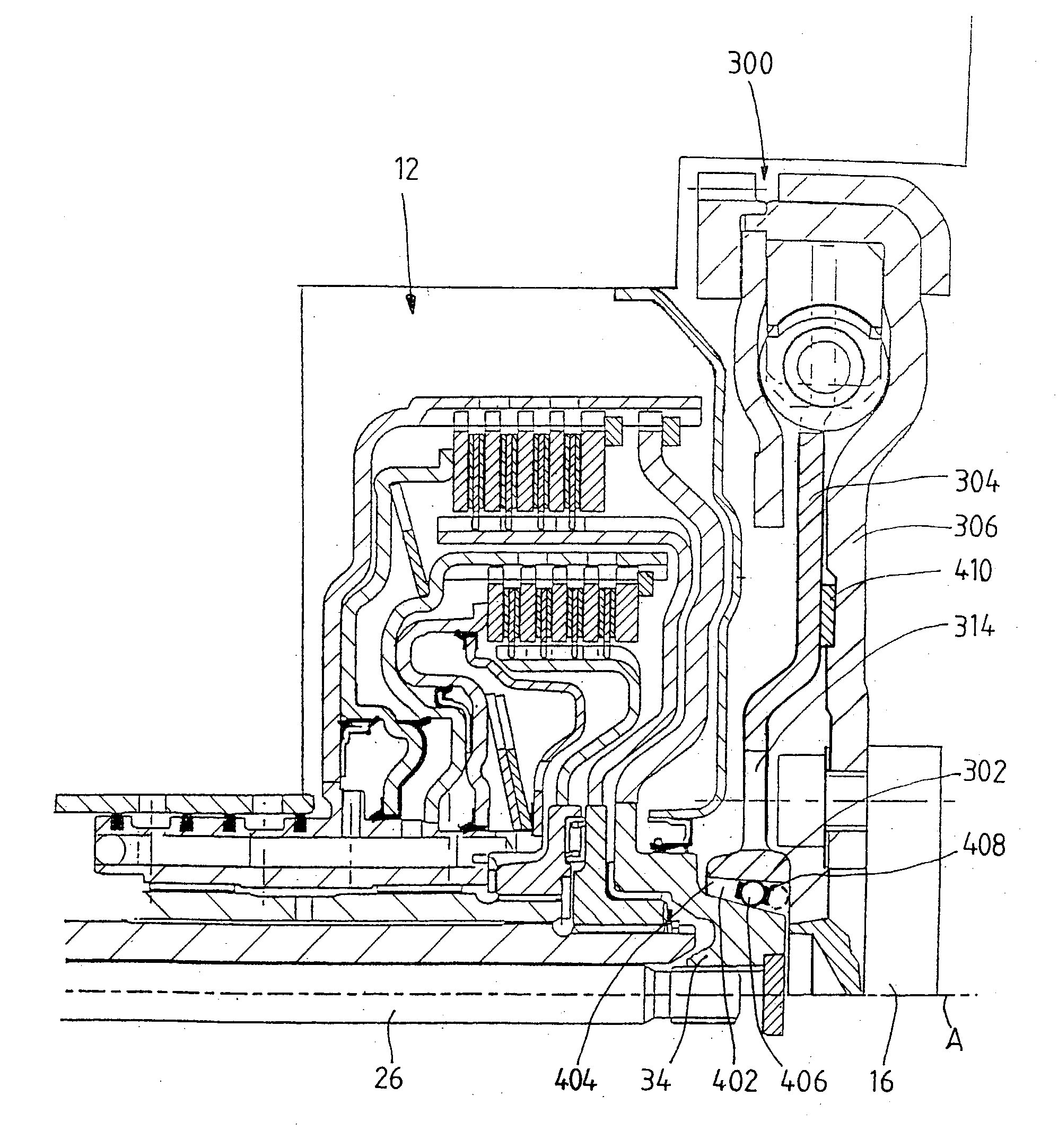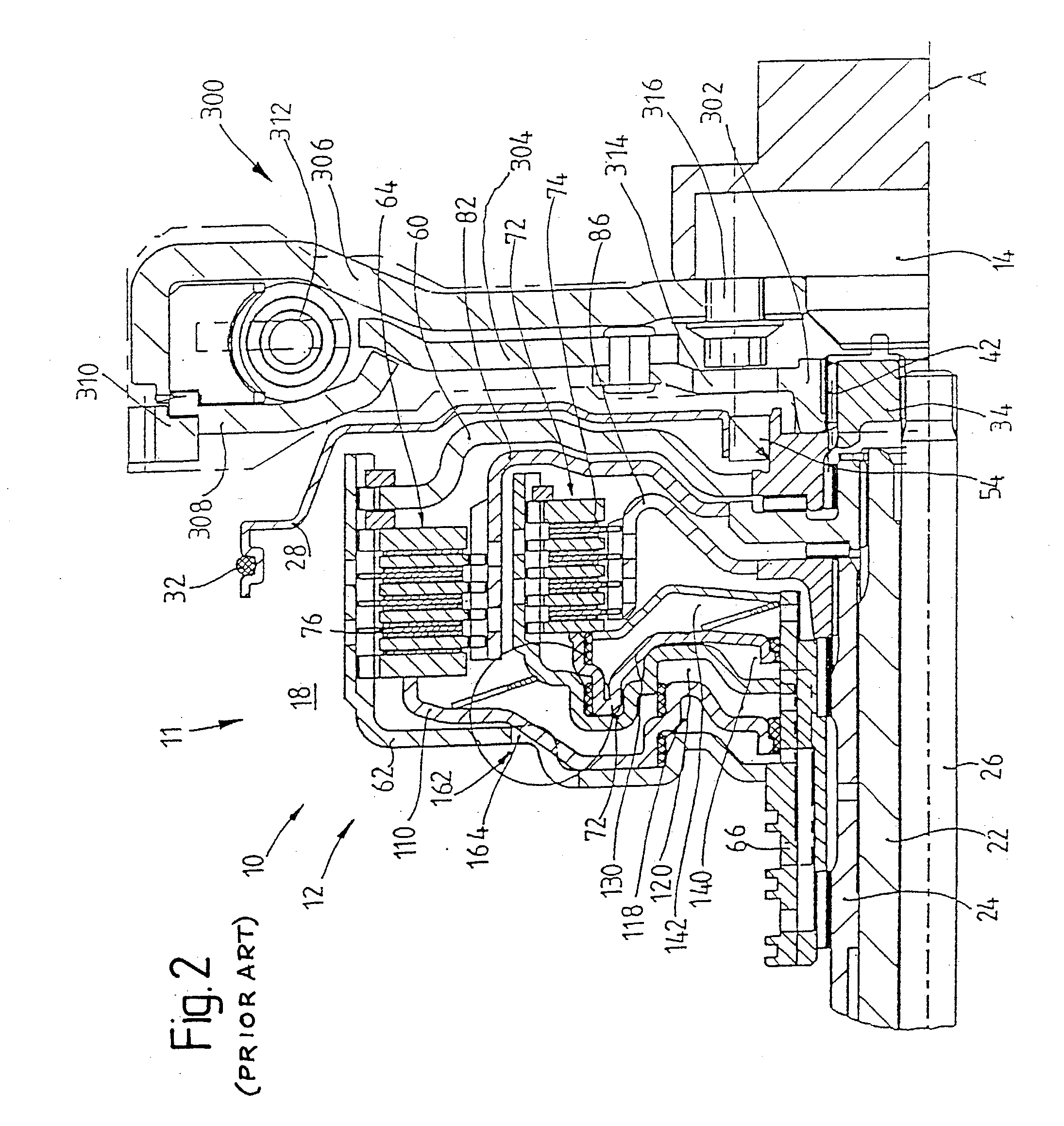Rotary driving insertion connection, particularly for transmitting torque in a drivetrain of a motor vehicle
a technology of insertion connection and drivetrain, which is applied in the direction of mechanical actuator clutches, couplings, mechanical apparatus, etc., can solve the problems of intensive engine vibration, annoying rattling noise, and noise of intensive engine vibration
- Summary
- Abstract
- Description
- Claims
- Application Information
AI Technical Summary
Benefits of technology
Problems solved by technology
Method used
Image
Examples
Embodiment Construction
[0040] FIG. 1 shows a dual clutch 12 arranged in a drivetrain 10 between a drive unit and a transmission. A drive unit, e.g., an internal combustion engine, is indicated in FIG. 1 only by a driven shaft 14, possibly a crankshaft 14, with a coupling end 16 for coupling to a torsional vibration damper, not shown. The transmission is illustrated in FIG. 1 by a transmission housing portion 20 defining a transmission bell housing 18 and two transmission input shafts 22 and 24, both of which are constructed as hollow shafts. Transmission input shaft 22 extends through the transmission input shaft 24 substantially coaxial to the latter. A pump drive shaft which serves to drive a transmission-side oil pump, not shown in FIG. 1, is arranged in the interior of the transmission input shaft 22.
[0041] A coupling hub 34 which extends through a central opening of the cover 28 in the direction of the drive unit and is coupled with the torsional vibration damper, not shown, by means of an external t...
PUM
 Login to View More
Login to View More Abstract
Description
Claims
Application Information
 Login to View More
Login to View More - R&D
- Intellectual Property
- Life Sciences
- Materials
- Tech Scout
- Unparalleled Data Quality
- Higher Quality Content
- 60% Fewer Hallucinations
Browse by: Latest US Patents, China's latest patents, Technical Efficacy Thesaurus, Application Domain, Technology Topic, Popular Technical Reports.
© 2025 PatSnap. All rights reserved.Legal|Privacy policy|Modern Slavery Act Transparency Statement|Sitemap|About US| Contact US: help@patsnap.com



